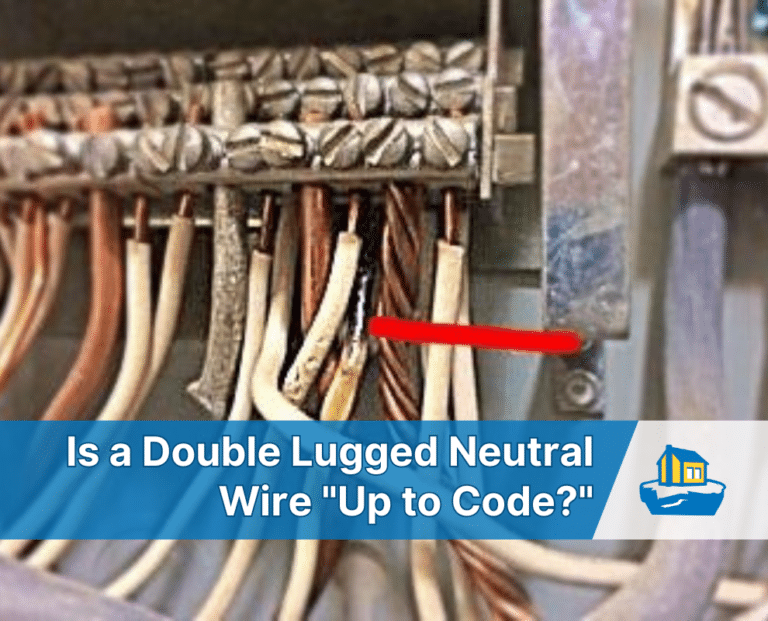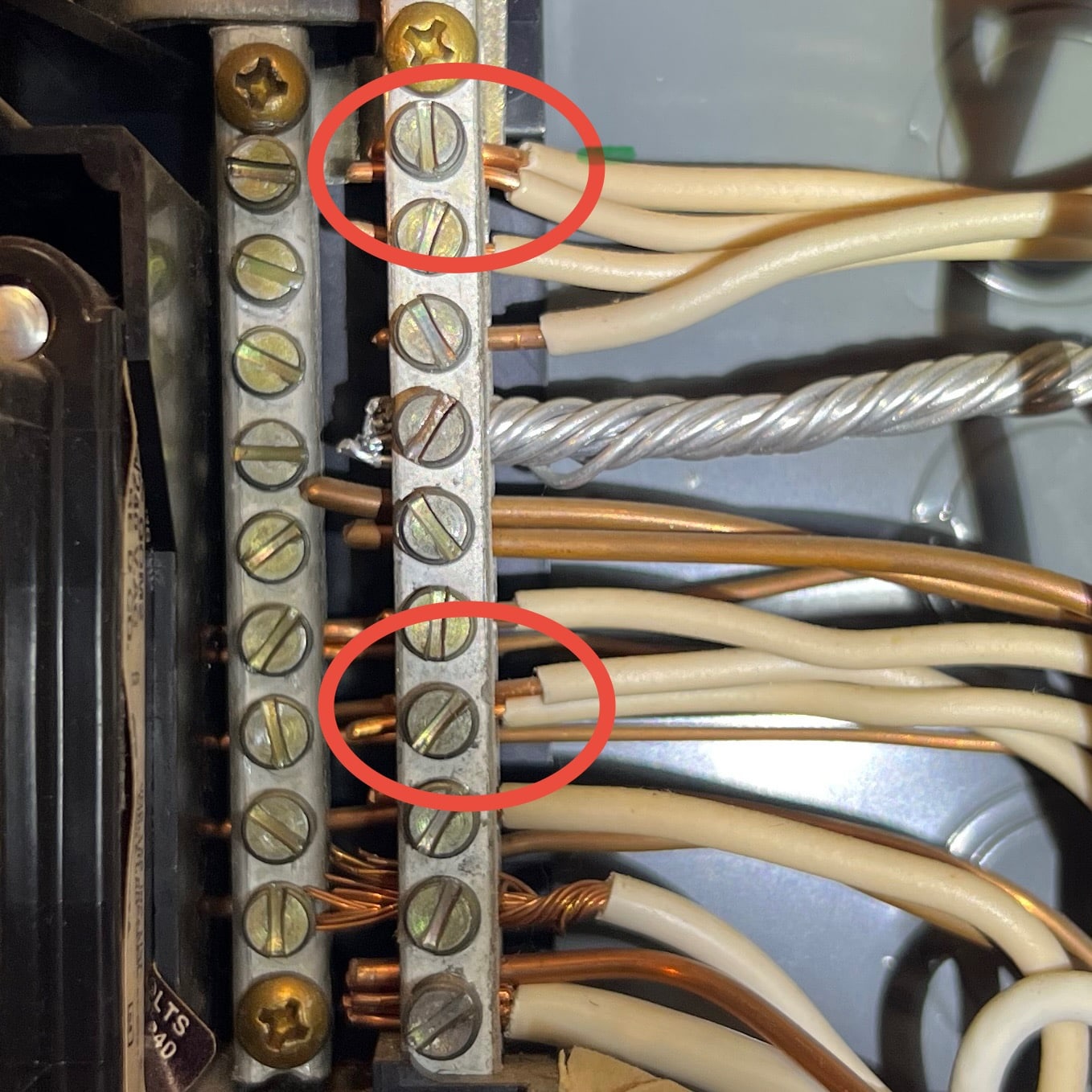4.8 1700+ Google Reviews

Have you ever read an inspection report and felt like it was written in another language? You're not alone! Even electricians sometimes call us for clarification. One common source of confusion is something called "double-lugged neutrals" (also known as double tapped neutrals).
In your home's electrical panel (breaker panel), white wires, known as neutral conductors (or neutrals), carry electrical power back to the source after it powers your appliances.
A "double-lugged neutral" occurs when someone installs two (or more) neutral wires under one lug (terminal screw) on the neutral bus bar. While it was once a common practice and this setup might seem harmless, it's actually a safety issue.

When two neutrals share a single lug:
Loose Connections: Over time, this can cause a loose connection, increasing the risk of electrical fires due to arcing and overheating.
Overloading Electrical Circuits: In Multi-Wire Branch Circuits (MWBC), if a neutral becomes loose, electrical current may incorrectly flow through other wires.
Difficulty Isolating Circuits: When neutrals share terminals, isolating an electrical circuit for repairs or troubleshooting can become challenging and dangerous.
Simply put, an up to code and safe electrical system does not have any double tapped neutrals.
Short answer: No.
In 2002, the National Electric Code (NEC) explicitly stated that each neutral conductor must terminate in an individual terminal.
However, even before this specification, UL 67 safety standards required individual terminals for neutral conductors.
Therefore, double-lugged neutrals have always presented a fire hazard and were never technically allowed.
This is often confusing for homeowners.
Even before 2002, electrical equipment labeling required neutral conductors to be connected individually. Therefore, double-lugged neutrals were never considered safe or up to code, regardless of your home's age.
The good news is that correcting double-lugged neutrals is straightforward and quick:
Redistribute Neutral Conductors: A licensed electrician can assign each neutral conductor to its individual terminal on the neutral bar.
Install Additional Neutral Bars: If your neutral bar lacks space, adding another neutral bar can solve the issue.
To further simplify understanding, here are common wiring color codes:
White (Neutral Conductors and Ground Wires): Returns electrical current back to the source.
Black Wires (Live or Hot Wires): Deliver electrical power from the circuit breakers to your appliances and outlets.
Green or Bare Wires (Grounding Wires): Prevent electrical shocks by directing unwanted electricity safely into the ground.
Allowing double tapped neutrals to persist in your electrical system creates unnecessary risk. A loose connection poses a significant fire hazard. Additionally, improperly wired neutrals complicate troubleshooting, creating a potential risk for electrical shock and further complications in identifying wiring color codes and circuit isolation.
Ensuring proper electrical wiring in your home helps prevent electrical fires, shocks, and hazards. If an inspection report notes issues with double-lugged neutrals or mentions double-tapped neutrals, contact a licensed electrician promptly to address the issue safely and efficiently.